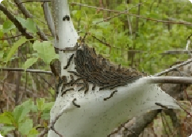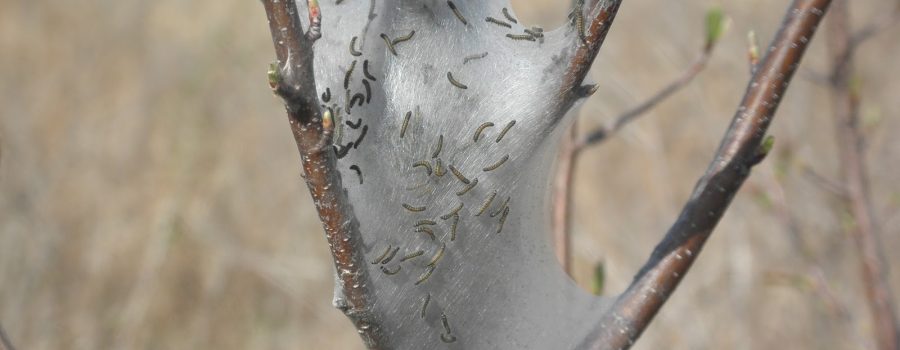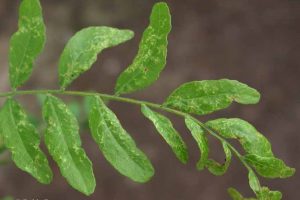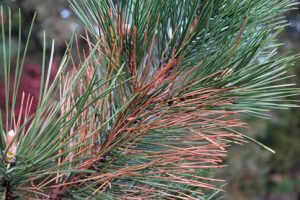Eastern Tent Caterpillar
 A caterpillar that defoliates trees. Large numbers of this insect occur at intervals of approximately 10 years.
A caterpillar that defoliates trees. Large numbers of this insect occur at intervals of approximately 10 years.
Symptoms
- White silk nests in the crotch of trees
- A caterpillar about 1” long, with thick tan hair, black in colour with irregular white and blue mottling
- Egg masses appearing as shiny, dark grey foam wrapped around a twig
- Holes in leaves, defoliated or partly defoliated trees
Causes
The insect overwinters as an egg, which hatch in the spring. Newly hatched tiny black caterpillars move to a nearby fork in a tree branch and begin to form a tent. They migrate in the afternoons to feed on fresh leaves. Feeding continues for four to six weeks until they grow to be about two inches long. At this time they leave the tree to form white cocoons within which they transform into reddish brown moths.
Treatment
Numerous predators and parasites attack this pest, but sometimes more direct methods are necessary. One method is to destroy the egg masses in the fall, or the nests in spring. Remove nests by scraping or pruning, then drop them into a pan of warm, soapy water. It is most effective to do this in the early morning or late afternoon, as most of the caterpillars will be in the tent at this time. Application of a product called Bacillus thuringiensis (Bt) to the plant foliage while the larvae are still small will help to defeat the caterpillars. Other insecticides are required as the caterpillar grows.






Leave a Reply
Your email is safe with us.